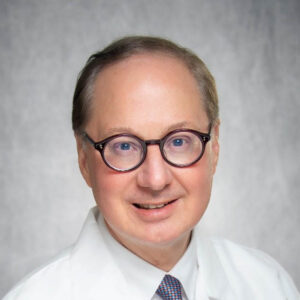Clark Stanford, D.D.S., Ph.D., M.H.A. has spent more than 23 years caring for individuals with ectodermal dysplasias and supporting the mission of the National Foundation for Ectodermal Dysplasias (NFED). Dr. Stanford is the Dean of the College of Dentistry at the University of Iowa and is a Professor of Prosthodontics.
Now the chairman of the Scientific Advisory Council, Dr. Stanford’s journey began during his residency at the University of Iowa with an unexpected moment that would shape his career.
“In the fall of my first year of my residency, I was just working in the lab,” Stanford said. “And the front desk called back saying there was a mom at the front desk with a five-year-old that needed dentures and would anyone put their hand up?” Stanford said. “And I’m like, dentures in kids? Sure, why not? First-year resident. And so I walked out and said, ‘Sure, I’ll see them.’ I ended up seeing that patient and his mom, and I guess that’s where it all started.”
That patient was five years old at the time.
“We ended up doing implants on the lower jaw and doing an overdenture reconstruction on him,” he said “And then 20 years later, we reconstructed his upper jaw. And now that’s probably 15 plus years ago.”
Early Awareness of Ectodermal Dysplasias
But, that wasn’t his first time learning about ectodermal dysplasias. A professor in dental school introduced him to the conditions.
“In pediatric dentistry, (Dr.) Art Nowak presented ectodermal dysplasias from a didactic (teaching) perspective, showing pictures and explaining the condition. So as a dental student, at least I was aware that there was this condition.”
Dr. Nowak, now a Professor Emeritus of Pediatric Dentistry and Pediatrics at the University of Iowa College of Dentistry and Medicine, made a lasting impression on Dr. Stanford. He played a key role in NFED’s early years, serving on the SAC from 1983-1994.
“There’s a pediatric lectureship in his honor. I just thought he was such a nice guy, and he did so much for the NFED.”
Joining the NFED’s Mission
Dr. Stanford’s official connection with the NFED came through another mentor.
“Dr. Al Guckes was a prosthodontist who was on the SAC. As I I vaguely remember, Al, who I knew through other academies in prosthodontics, knew I had an interest in ectodermal dysplasia…And so he asked me to come on and help the NFED and that’s when I started.”
He admits he could not say no.

“[Al] jokingly said, ‘Well, (the late NFED founder) Mary Kaye Richter is a force to be reckoned with and you will learn that you can’t say no’, which was true.”
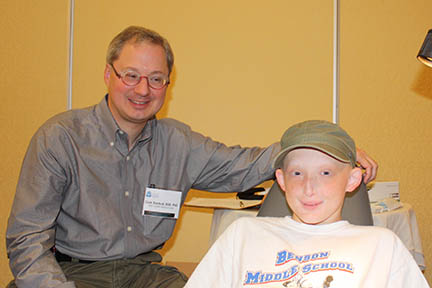

Leader in Ectodermal Dysplasias Dental Treatment
We are glad Dr. Stanford responded to the invitation from Dr. Guckes in 2002! Since then, he’s become one of the leaders in dentistry on how to treat the ectodermal dysplasias. He’s written educational resources for the NFED, led workshops and conducted ectodermal dysplasias research. He’s educated other care providers by lecturing at NFED Dental Symposia at universities. Dr. Stanford answers the NFED staff’s questions and is always willing to talk to families at Conferences about their dental journeys.
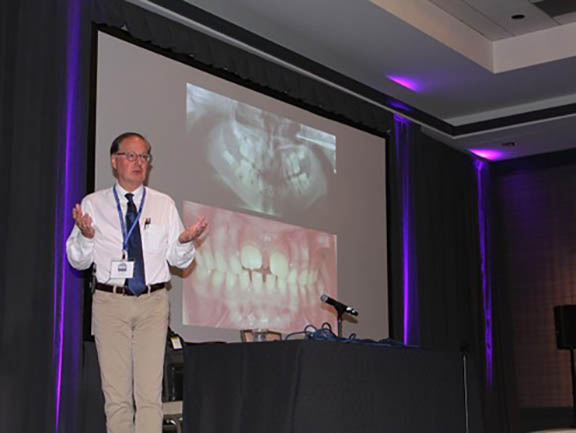
Executive Director Mary Fete said it best.
“Dr. Stanford is not only a brilliant dentist and prosthodontist, but even more so a compassionate and empathetic member of the NFED family,” Mary said. “We would not be who we are as a patient advocacy organization without his contributions, leadership, and love for the people he meets, not only at our conferences, but also those he treats in his office. Dr. Stanford has given voice to the ectodermal dysplasias community in a way that has made a difference in the lives of so many. We love Dr. Stanford, and I am forever grateful for his commitment to our community and the NFED!”
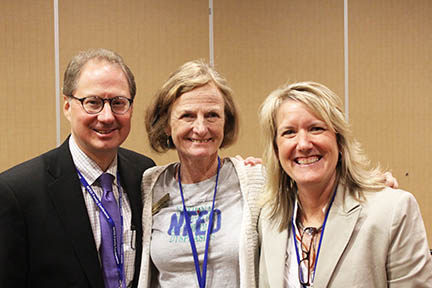
Walking with Families on Their Journey
Dr. Stanford said it’s NFED’s unique perspective that has kept him engaged for more than two decades.
“Most of the academies and things are from a provider perspective, but you rarely get a patient perspective or understanding of the patient’s journey as well. What I’ve learned over 25 years is understanding that each journey is different.
As I like to tell my students, we are simply guests in the lives of our patients, but we’re there to help them on their journey. It’s their journey, not your journey.”
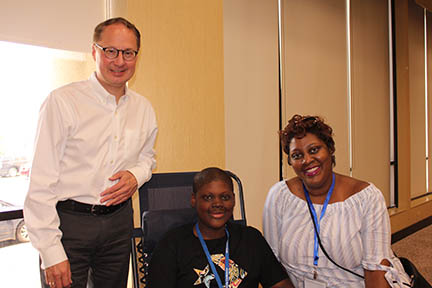
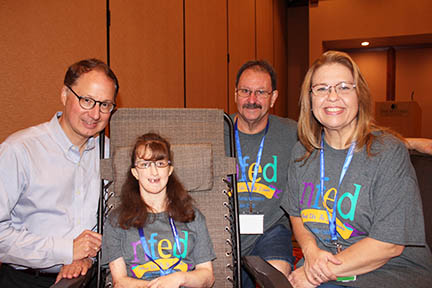
Being part of NFED Family Conferences underscores that for him.
“This is their reunion, if you will,” Dr. Stanford said. “We’re here to answer questions and help them, but it’s not about us, it’s all about them. And, that’s most important.”
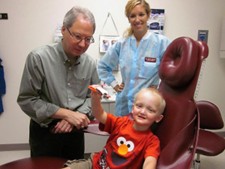
That patient-centered approach extends into his teaching philosophy, too.
“At graduation every year, students don’t like the fact that I tell them, ‘You will never have a patient give you a multiple-choice test. It will always be a narrative – an essay – and you have to understand the patient’s journey.’ I then explain, ‘Everyone has heard about the golden rule: treat others as you would want to be treated. But in the real world, I teach the platinum rule: You need to understand exactly how [patients] want to be treated, not how you want to be treated.’”
Reaching Patients Around the World

Dr. Stanford has cared for patients across the globe, from Brazil, Colombia, Greece, Mexico, Russia, and more. They have even traveled to receive care from him. He connects international patients with local providers whenever possible, but technology now allows him to remain a resource.
“Nowadays, with the technology, you can just do a Zoom call with their care team and outline what a proposed care plan would be,” he said. “Sometimes, all they need is reassurance, and I don’t need to be directly involved. But, sometimes they do want to come.”
Research Contributions


As the SAC chair, Dr. Stanford has played a role in significant research projects and studies on the quality of life and comparisons between affected versus unaffected siblings. He was also an instrumental part of a retrospective study on the National Institutes of Health dental implant trial in the 1980s that reviewed the progress of patients 20 years later.
Dr. Stanford also closely follows the Edelife Clinical Trial for an XLHED treatment.
“There was an initial burst of excitement, but as with all drug development, it takes time to move through the process. Where we are now, it’s essentially a proof of concept for one narrow condition, but the drug delivery mechanism could help many other types of conditions.
“From a scientific perspective, the outcomes have been fascinating,” Dr. Stanford said. “The initial young boys treated by Prof. Holm Schneider are about nine years old now. The condition that was treated (sweating) seems to be maintained. It’s fascinating that one in-utero drug delivery doesn’t have to be repeated. It appears to have a lasting effect, almost like all you had to do was kickstart the process.”
Why He Keeps Coming Back
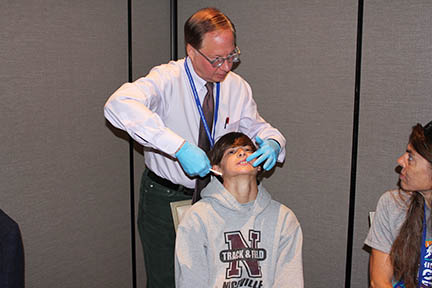
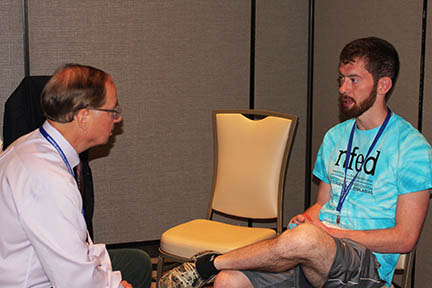
For Dr. Stanford, the NFED is more than an organization; it is a community.
“I think of it more as one big family reunion. You see people talking and normalizing things with each other, sharing advice from parent to parent, parent to child, and kid to kid. Everyone’s running around, smiling, and having fun, like a good family reunion.”
The NFED has also given him a rare kind of professional enrichment.
“The NFED gives me a forum to learn more about dermatology, genetics, ophthalmology, and ear, nose and throat issues, so that I’m better prepared to have a conversation and manage the patients that come to see me. There isn’t another way to get that broad perspective unless I went to every specialty meeting, which I don’t have time to do.”
And then, there’s the simple truth.
“You can never say no to Mary Kaye Richter or Mary Fete,” he said with a laugh.
